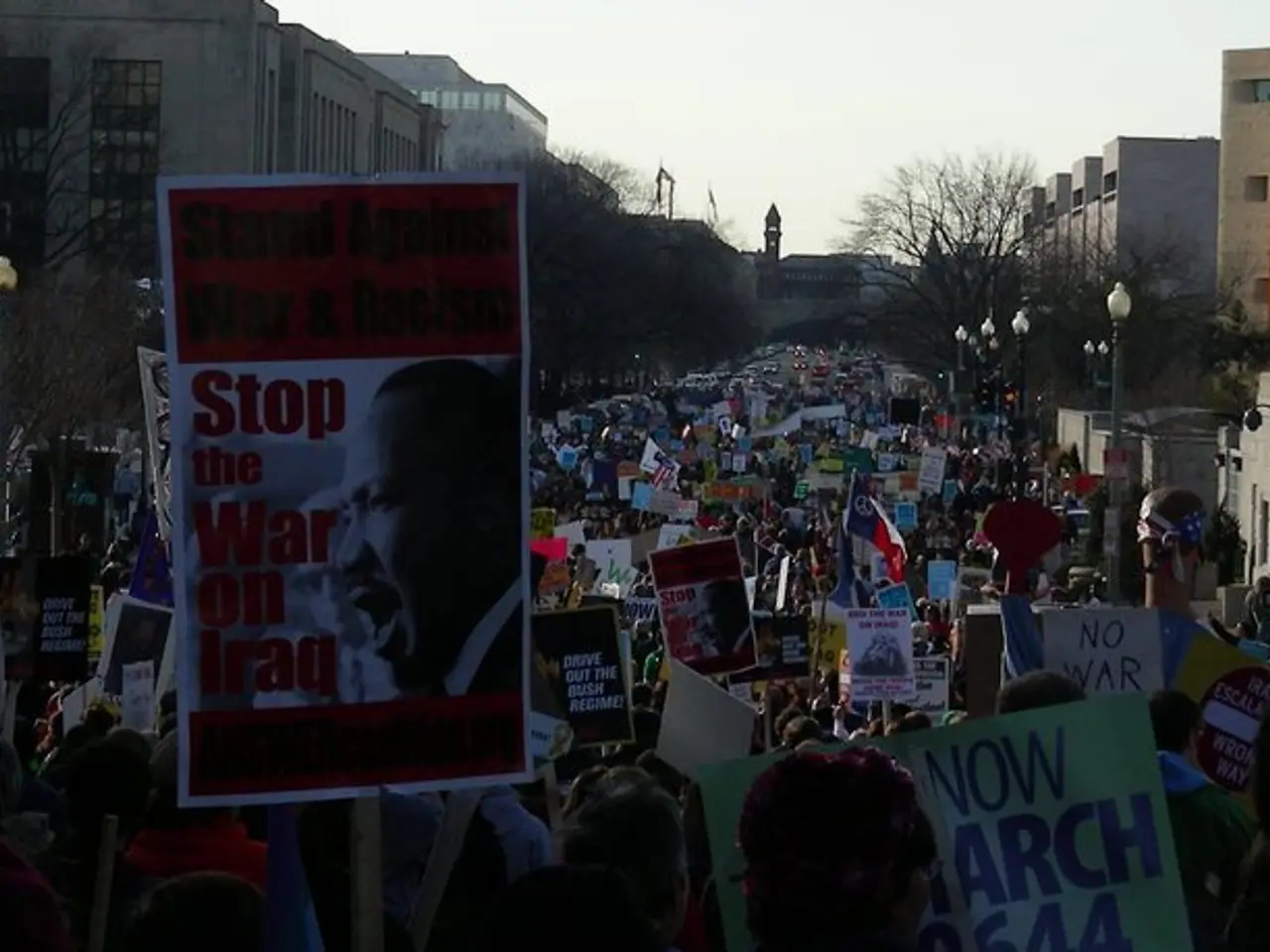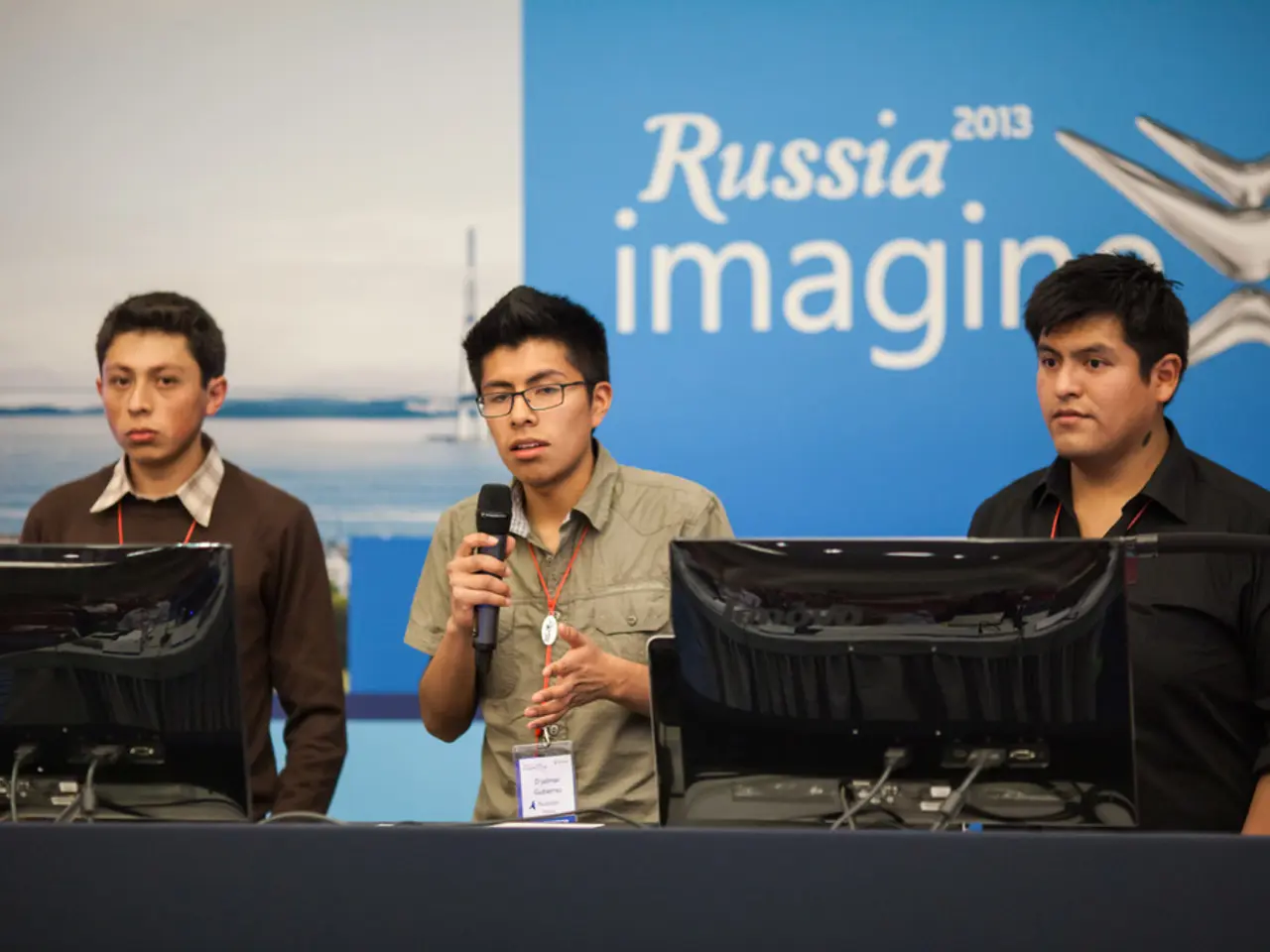Brazilian President to Discuss BRICS' Countermeasures Against Trump's Tariffs with Fellow Leaders
The current US tariff rates announced by President Donald Trump impose up to 50% tariffs on Brazil and India, among other countries, as part of an intensified trade campaign targeting over 90 countries. These tariffs, which are not limited to strategic sectors like the exceptions made in the Brazilian tariff increase, have significant implications for BRICS countries, particularly Brazil and India.
The potential implications for BRICS members include escalated trade tensions, economic pressure on exports to the US, fragmentation within the bloc, and a shift away from US-led trade and financial systems. These tariffs add to friction between the US and BRICS members, exacerbating already strained relations due to BRICS's efforts to reduce reliance on the US dollar and Western-led financial institutions.
The tariffs raise costs for BRICS exports, likely reducing their competitiveness in the US market and potentially provoking retaliatory tariffs by BRICS countries. This could further reduce bilateral trade volumes and increase costs for US consumers and businesses. According to estimates, these tariffs could cost up to $56 billion annually.
While BRICS collectively condemns trade restrictions, its members pursue separate bilateral negotiations with the US, reflecting limited unity in countermeasures against US tariffs. Notably, no BRICS country except Indonesia has finalized a US trade deal, and Brazil and South Africa face steep new tariffs set to take effect starting August 1.
The tariffs reinforce BRICS’s motivation to seek alternative trading and monetary arrangements outside US influence. The Brazilian leader, in response to the tariffs, declared an intention to discuss tariffs with leaders of India and China.
On July 7, Donald Trump said he could impose 10% tariffs on countries supporting BRICS, but the specifics are not specified. However, it is important to note that these tariffs would be lower than the potential 100% tariffs Trump mentioned in January.
Donald Trump has signed an order to increase tariffs on Brazilian products to 50%, and he announced an additional 25% tariff for India, raising the rate to 50%. The Brazilian leader stated that Brazil has no advantages in negotiations with the US.
In contrast to his previous statement allowing for the possibility of imposing additional restrictions on China, Donald Trump's statement on July 7 does not mention any additional restrictions on other countries. He also emphasized that there would be no exceptions for countries supporting BRICS.
As of now, the tariffs Donald Trump mentioned on July 7 are not yet reported by CNBC or any other specific news outlet. Donald Trump also allowed for the possibility of imposing additional restrictions on other countries, including China.
In summary, the US tariffs—particularly the 50% levies on Brazil and India—represent an aggressive US stance that increases trade barriers, encourages retaliatory actions, disrupts BRICS unity, and may accelerate shifts in global trade and financial alignments away from US dominance.
- The 50% tariffs on Brazil and India, part of the US trade campaign, are causing concerns within the BRICS bloc, as they may lead to increased trade tensions, economic pressures on exports, and potential retaliatory tariffs, resulting in reduced bilateral trade volumes and increased costs for both countries and the US.
- The policy-and-legislation move by the US to levy high tariffs on BRICS members not only reinforces the need for alternative trading arrangements outside US influence but also has implications for the broader global trade landscape, potentially accelerating shifts away from US-led trade and financial systems.








